EM Test NX7 bsprt-1-400-32
Included Accessories
Can't find something? Contact UsRelated Equipment
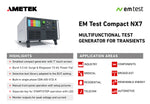
Description
The compact Next Generation NX7 is the most versatile tester to address transient and power fail requirements for both international and commercial standards.
Featuring an easy-to-use color touch screen, the NX7 provides an economical solution for pre-compliance immunity testing as well as full-compliance testing and CE Marking. Its internal single-phase Coupling/Decoupling Network (CDN) can be extended for testing three-phase EUTs by means of an automatically controlled external CDN up to 200 A per phase. AMETEK CTS supplies a large range of accessories for various applications such as magnetic field tests and more.
Benefits:
The compact NX7 is a standalone generator which includes everything necessary to perform fully compliant tests. With separate power mains supply inputs, it allows the utilization of different EUT supply voltages for maximum flexibility.
The NX7 can be operated manually from the intuitive front touch screen or remotely via its built-in Ethernet, USB or optical interface. Failure inputs allow control of an ongoing test sequence based on the state of the EUT. Monitoring outputs (BNC) offer easy signal verification and measurements. For enhanced safety requirements, features like interlock and a warning lamp are available.
NX7 is the first generator that recognizes the connected EUT power configuration. Only coupling selections to active lines are enabled. Non existing lines will be disabled from the menu settings. Pre-programmed routines with common Test Standards allow maximum user convenience. Quick Start Test routines where parameters can be changed during susceptibility level evaluation are also available.
Operation:
An innovative color touch screen with intuitive menu structure and defined keys for Start / Stop / Break, indicated by LED bars, enables the user to program test routines quickly and accurately. The touch screen and knob allow fast control of all test parameters of the programmed routine, ensuring that test procedures are simplified and confidence is high that every step is carried out correctly.
Software:
Outstanding user convenience, clearly structured windows and operation features, EM TEST's comprehensive standards library along with the flexibility to easily generate user specific test sequences are the main features of iec.control software. The software will be automatically configured in accordance with the connected EM TEST generators. Extensive reporting capabilities help the user to create test reports that meet international requirements.
The iec.control is supported by Windows 7, Windows 8 and Windows 10. Remote control is achieved either via Ethernet or optical interface with USB connector at the PC side. The iec.control supports various interfaces for the communication to external measuring devices
- Technical Details
- Electrical Fast Transients:
- Burst Module
- As per IEC/EN 61000-4-4 and EN 61000-6-1, -6-2
- Test voltage
- 200 V - 5,500 V+/- 10%;
100 V - 2,750 V +/- 10% into 50 ohm - Pulse shape
- 5/50 ns into 50 ohm and 1,000 ohm
- Rise time tr
- 5 ns +/- 30% into 50 ohm;
5 ns +/- 30% into 1,000 ohm - Pulse width td
- 50 ns +/- 30% into 50 ohm;
50 ns -15/+100 ns into 1,000 ohm - Source impedance
- 50 ohm
- Polarity
- Positive, negative
- Trigger Circuit:
- Trigger of bursts
- Automatic, manual, external
- Synchronization
- 0 - 360 degrees, resolution 1 degree (16 - 500 Hz)
- Burst duration (td)
- td = 0.10 ms - 9,999 ms
- Repetition rate (tr)
- tr = 10 ms - 9,999 ms
- Spike frequency
- f = 1 Hz - 1,000 kHz
- Test duration
- T = 0:01 min - 99:59 min
T > 99:59 min --> endless - Outputs:
- Direct
- Via 50 ohm coaxial connector
- Coupling mode
- L, N, PE; all combinations
- EUT supply
- AC: 300 V / 400 V, 50/60 Hz
DC: 300 V / 400 V,
Current: 16 A / 32 A - CRO trigger
- 5 V trigger signal for oscilloscope
- Test Routines:
- Quick Start
- On-line adjustable parameters, easy-to-use
- Standard Test routines
- As per IEC/EN 61000-4-4, Levels 1 - 4
As per IEC/EN 61000-6-1, -6-2
As per ECE R-10 Rev5 - Extended Test routines
- Change voltage after T, Frequency sweep within one burst, Frequency sweep with constant number of pulses, Frequency sweep with constant burst duration, Synchronous burst release, Random burst release
- Combination Wave:
- Surge Module
- As per IEC/EN 61000-4-5 and IEC/EN 61000-6-1, -6-2
- Voltage (o.c.)
- 200 V - 7,000 V +/- 10%
- Pulse front time
- 1.2 us +/- 30%
- Pulse duration
- 50 us +/- 20%
- Current (s.c.)
- Max. 3,500 A +/- 10%
- Pulse front time
- 8 us +/- 20%
- Pulse duration
- 20 us +/- 20%
- Polarity
- Positive, negative, alternate
- Trigger Circuit:
- Release of pulses
- Automatic, manual, external
- Synchronization
- 0 - 360 degrees, resolution 1 degree
- Repetition rate
- max. 1 Hz (1 s - 9,999 s)
- Event counter
- 1 - 99,999, selectable
- Outputs:
- Direct
- Via HV connectors for external coupling networks
- Coupling mode
- Line to line
Line(s) to ground - EUT supply
- AC: 300 V / 400 V, 50/60 Hz
DC: 300 V / 400 V,
Current: 16 A / 32 A - CRO trigger
- 5 V trigger signal for oscilloscope
- Measurements:
- CRO U-monitor
- 10 Vp at 7,000 V
- CRO I-monitor
- 10 Vp at 3,500 A
- Peak voltage
- 7,000 V in the touch display
- Peak current
- 3,500 A in the touch display
- Overcurrent protection
- Breaks the Surge test when the surge current is over the limit, Limiter for differential mode, Limiter for common mode
- EUT current
- RMS current, Range 50 A, < +/-5%
- EUT overcurrent protection
- Breaks the test when the EUT current is over the limit,
- Test Routines:
- Quick Start
- One-line adjustable parameters, easy-to-use
- Standard Test routines
- As per IEC/EN 61000-4-5,
As per IEC/EN 61000-6-1,
As per IEC/EN 61000-6-2,
Manual Standard Test routine - Extended Test routines
- Voltage iteration after n pulses, Angle iteration stepwise, Phase angle randomiteration, Change coupling after n pulses, Change phase angle after n pulses
- Pulsed Magnetic Field
- as per IEC/EN 61000-4-9 Test levels 100, 300 and 1,000A/m Test level continuously adjustable under Quick Start
- Dips, Interruptions, Voltage Variations
- Power Fail Module:
- As per
- IEC/EN 61000-4-11,
IEC/EN 61000-4-29 and
IEC/EN 61000-6-1, -6-2 - Channel PF1/PF2
- AC voltage: max. 300 V / 400 V
AC current: max. 16 A / 32 A
DC voltage: max. 300 V / 400 V
DC current: max. 16 A / 32 A - Frequency
- 16 Hz - 500 Hz and DC
- Switching time
- > 1 �s < 5 �s into a 100 ohm resistive load (SVP 100)
- Inrush current
- > 500 A
- Protection
- Both channels are protected against short-circuit conditions.
- Trigger Circuit:
- Trigger of events
- Automatic, manual, external
- Synchronization
- 0 - 360 degrees, resolution 1 degree (16 - 500 Hz)
- Repetition rate
- 10 ms - 9,999 s
- Event duration
- 10 us - 99.999 s
- Event counter
- 1 - 99,999, selectable
- Outputs:
- EUT terminals
- L, N and PE
- CRO trigger
- 5 V trigger signal for oscilloscope
- Measurements:
- EUT voltage (rms)
- In the touch screen
- EUT current (rms)
- In the touch screen
- MON V
- Measurement of the EUT voltage, built-in divider:
300 V: 42,5:1, 10 V =425 Vpk,
400 V: 56.6:1, 10 V =566 Vpk - MON I
- Measurement of the EUT current,
16 A: 7 A/V; 10 V =70 Apk,
32 A: 10 A/V; 10 V =100 Apk - Test Routines:
- Quick Start
- Standard Test routines
- Extended Test routines
- VoltAs per IEC/EN 61000-4-11 for AC supplies
As per IEC/EN 61000-4-29 for DC supplies
As per EN 61000-6-1, -6-2
Manual Standard Test routine - 50/60 Hz magnetic field
- As per IEC/EN 61000-4-8 Test levels 1, 3, 10 and 30 A/m with external current transformer MC 2630, Test levels 100, 300 and 1,000 A/m with external current transformer MC 26100
- Ringwave
- Ringwave Module:
- As per ANSI/IEEE C62.41 and EN/IEC 61000-4-12
- Test voltage
- 200 V - 7,000 V +/- 10%
- Voltage
- Wave shape (open circuit)
- Rise time
- 0.5 us +/- 30% (first peak)
- Oscillation frequency
- 100 kHz +/- 10%
- Decaying
- Peak 2 to peak 1 = 40 - 110% Peak 3 to peak 2 = 40 - 80% Peak 4 to peak 3 = 40 - 80%
- Current
- Wave shape (short circuit)
- Rise time
- 0.2 �s < tr <= 1.0 �s
- Oscillation frequency
- 100 kHz +/- 10%
- Source impedance
- 12 ohm, 30 ohm, 50 ohm
- Peak current
- As per selected source impedance
- Polarity
- Positive, negative, alternate
- Trigger Circuit:
- Release of pulses
- Automatic, manual, externa
- Synchronization
- 0 - 360 degrees, resolution 1 degree
- Repetition rate
- max. 1 Hz (1 s - 9999 s)
- Event counter
- 1 - 99,999, selectable
- Outputs:
- Direct
- Via HV-safety lab connectors
- Coupling mode
- L, N, PE; line to line and line(s) to ground
- DUT supply
- AC: 300 V / 400 V, 50/60 Hz
DC: 300 V / 400 V,
Current: 16 A / 32 A - CRO trigger
- 5 V trigger signal for oscilloscope
- Measurements:
- CRO U-monitor
- 10 Vp at 7,000 V
- CRO I-monitor
- 10 Vp at 3,500 A
- Peak voltage
- 500 V - 7000 V in the touch display
- Telecom Surge
- Tsurge Module:
- Test voltage (o.c.)
- 200 V - 7,000 V +/- 10%
- Energy storage capacitor
- 20 uF
- Polarity
- Positive, negative, alternating As per ITU and ETSI recommendations
- Front time
- 10 us +/- 30%
- Pulse duration
- 700 us +/- 20% As per FCC part 68, Pulse B
- Front time
- 9 us +/- 30%
- Pulse duration
- 720 us +/- 20%
- Output current @25 ohm output
- 5 A - 175 A (short circuit)
- Rise time
- 5 us +/- 30%
- Pulse duration
- 320 us +/- 20%, As per IEC 61000-4-5
- Rise time
- 10 us +/- 30%
- Pulse duration
- 700 us +/- 20%
- Output current @25 ohm output
- 5 A - 175 A (short circuit)
- Rise time
- 5 us +/- 20%
- Pulse duration
- 320 us +/- 20%
- Trigger Circuit:
- Trigger of events
- Automatic, manual, external
- Repetition rate
- max. 0.33 Hz (3 s - 999 s)
- Event counter
- 1 - 99,999, selectable
- Outputs:
- As per ITU
- For 2-wire T1/T2 with 25 ohm each
- As per FCC part 68
- For 2-wire T1/T2 with 25 ohm each
- As per IEC 61000-4-5 Ed 3.0
- For 4-wire T1/T2/T3/T4 with 25 ohm each
- General Data
- Interfaces:
- Serial interface
- 2 x USB A for memory stick,
1 x USB B for service only,
Opto - Link to USB for remote - Lan
- Ethernet for remote
- Analog output
- 0 - 10 VDC to control an external transformer
- Sys.link
- 26 pin high density connector to control an external coupling network
- Fail inputs
- EUT monitoring via input (one each)
EUT Monitor 1
EUT Monitor 2 - Ext. Trigger
- BNC Ext. Trigger IN pos slope 5 V
- Ext. Sync Input
- Differential input, 50 V - 690 VAC, 2 x 4 mm MC Safety connectors
- Dimensions and Weight
- 16 A models
- 19"/6 HU, 500 mm deep, 19"/9 HU, with telecom module, approx. 30 kg
- 32 A models
- 19"/6 HU, 500 mm deep, 19"/9 HU, with telecom module, approx. 40 kg
- Environment:
- Temperature
- 10 C to 35 C (Operation) -10 C to 60 C (Storage)
- Humidity
- 30 % to 70 %, non condensing
- Atmospheric pressure
- 86 kPa (860 mbar) to 106 kPa (1,060 mbar)
- Mains:
- Supply voltage
- 85 V - 264 V
- Frequency
- 50/60 Hz
- Power
- approx. 75 W
- Fuses
- 115 V: 2 x 4 A slow blow,
230 V: 2 x 2 A slow blow




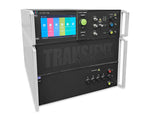
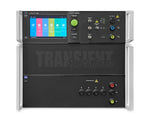
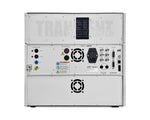
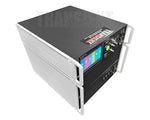
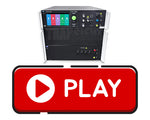
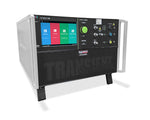
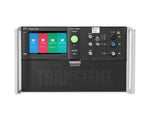
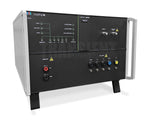
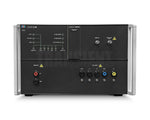
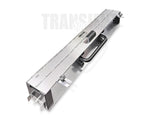
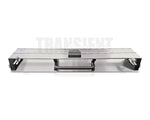
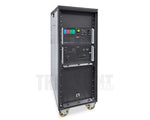
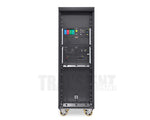
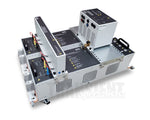
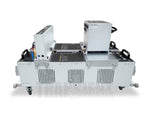
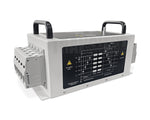
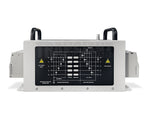
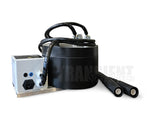
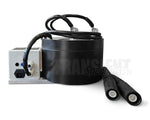
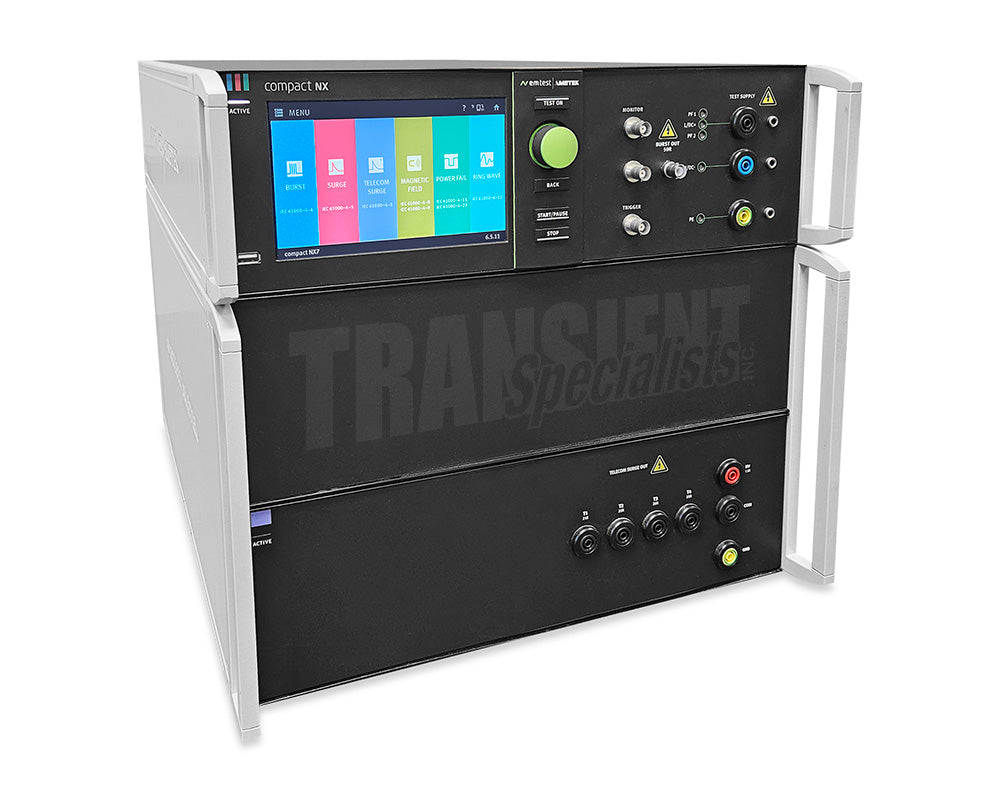

 info@transientspecialists.com
info@transientspecialists.com